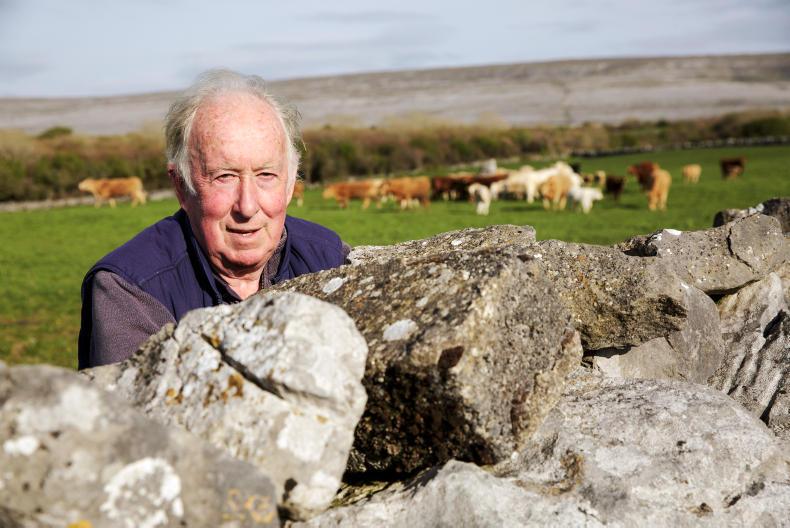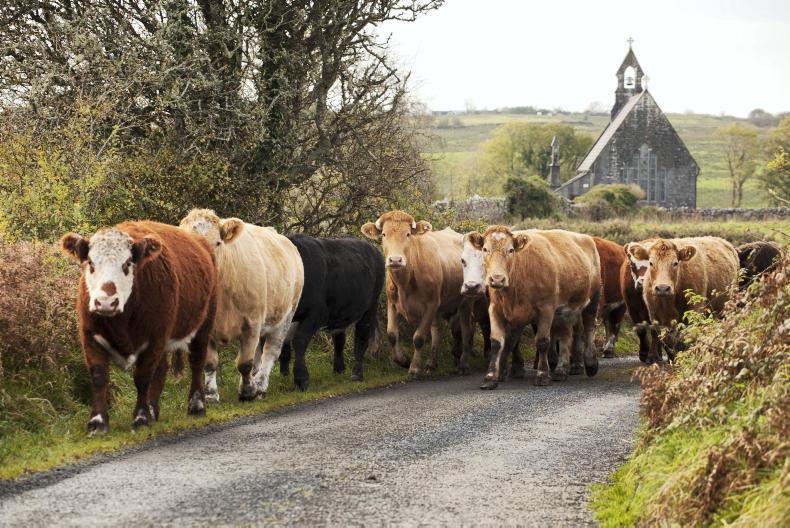After building the first locally led agri-environmental scheme to secure CAP funding in Ireland and
winning an award for the best of 4,000 similar projects across Europe, Burren farmers could rest on their laurels. Instead, they’re going back to the drawing board.At a recent meeting in Kilfenora, Co Clare, they joined the scientists and state agencies involved in the Burren programme. The agenda: start work on their vision for the future of sustainable farming in a region that combines unique suckler winterage systems, a fragile environment partly protected in a national park and high tourism potential.
After building the first locally led agri-environmental scheme to secure CAP funding in Ireland and winning an award for the best of 4,000 similar projects across Europe, Burren farmers could rest on their laurels. Instead, they’re going back to the drawing board.
At a recent meeting in Kilfenora, Co Clare, they joined the scientists and state agencies involved in the Burren programme. The agenda: start work on their vision for the future of sustainable farming in a region that combines unique suckler winterage systems, a fragile environment partly protected in a national park and high tourism potential.
“Things are changing rapidly in policy with CAP and Brexit, and we have a window of opportunity to influence that. But what do we want?” Sligo IT lecturer James Moran asked the participants.
Listen to a discussion on the future of the Burren programme in our podcast below:
Moran has been working with the Burren programme and a new network of European regions sharing experience on so-called high nature value farming, HNV Link. He said his contacts in other countries constantly referred to the Burren programme as an example.
On a visit to Kilfenora to present the Burren community with the EU’s Green Award, Minister for Agriculture Michael Creed added: “The key principles established here in the Burren are now forming the basis for a suite of new agri-environment projects, funded by the Irish Government and the EU.”
The Department of Agriculture is currently inviting new ideas for similar projects elsewhere in the country, with €24m available in funding.
Verifiable results
The Burren programme is unique, in that it ties farmers’ payments to verifiable results in improving practices.
“The programme pays farmers to farm in a way that delivers a product, and that product is the conservation of the Burren,” explained programme scientist Sharon Parr. Farmers choose actions, for example relocating water and feed troughs away from fragile spots. Only after reducing damage to habitats around the troughs do they receive payments. Each field gets a score out of 10.
“By improving your score, you can get more money,” said Parr.

Between 2010 and 2016, the Burren Programme paid an average €6,500/year to each participating farmer.
“Fifteen years ago, if we had said we would be paying farmers to produce biodiversity you’d have laughed us out of the room,” said programme manager Brendan Dunford. There are now 320 farmers in the scheme and the target is to reach 450 next year.
’Tourist honeypot’
Clare County Council tourism executive Carol Gleeson said training programmes for 100 business in her sector were modelled on those received by Burren farmers, with a lot more to be done to realise the full potential of the “biggest tourist honeypot in Ireland” that are the Burren and the Cliffs of Moher.
 For all the positive feedback on their programme, the farmers know that they have not solved all their problems – starting with generational renewal.
For all the positive feedback on their programme, the farmers know that they have not solved all their problems – starting with generational renewal.
“The age profile of farmers in the Burren is rising at the same rate as other farmers in society. Who will be farming here? Only we can answer this question,” said Michael Davoren of the IFA’s Burren branch.
“Within five miles of where I farm, there are 20 houses with one person living in them,” added suckler farmer Raymond Linnane (pictured), lamenting the lack of successors. The scientists and advisors supporting the programme agree.
Infrastructure, including roads and broadband, emerge as a major need to keep families in the area and keep off-farm income flowing, and participants say obtaining state support will be key here. But there is also a lot farmers say they can do themselves, with suggestions of an apprenticeship programmes to attract young people with agriculture or environmental training to come and work in the Burren.

With farmers in the region largely dependent on suckler farming, they also want to get a better return from their cattle.
“We have low antibiotics and low fertiliser use, our animals are hardier,” said participants to the meeting. Weanling buyers appreciate those qualities, but farmers here are too remote from final consumers to engage in branding or other active marketing strategies that would ensure them premium prices.
Bord Bia brings groups of buyers from France and Germany here, pitching Origin Green to them, but how do we capitalise on that?
“Bord Bia brings groups of buyers from France and Germany here, pitching Origin Green to them, but how do we capitalise on that?” they asked.
Some farmers would like to explore beef finishing in the Burren. Others argue that additional income  is more likely to come from increased agri-environmental payments, with scrub control mentioned as an area where they would be willing to make more efforts in exchange for extra financial support.
is more likely to come from increased agri-environmental payments, with scrub control mentioned as an area where they would be willing to make more efforts in exchange for extra financial support.
The debate will continue at the winterage weekend festival in October. Whatever way the Burren goes in the future, its farmers know it is up to them.
Read more
Burren Life: Building a new scheme from the ground up
The Burren: where cowman is king
Full coverage: locally-led schemes





SHARING OPTIONS: